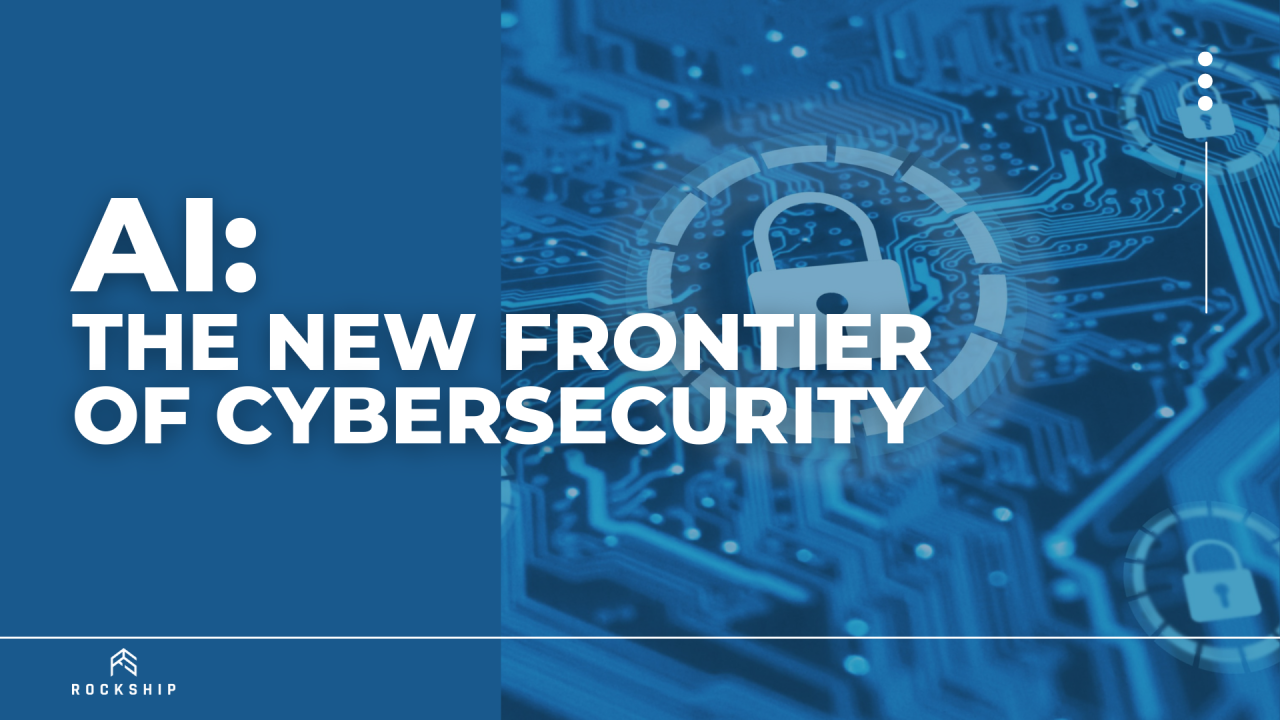As you browse the internet, send emails, and access critical data, an invisible war is raging in the digital realm. Cyber threats are evolving at an alarming pace, from malware and phishing to sophisticated nation-state attacks. Staying ahead of these threats requires advanced tools and techniques.
Artificial intelligence is emerging as a powerful ally for cybersecurity, using machine learning and automation to detect and thwart attacks faster and more accurately than humans alone. AI is poised to transform cybersecurity, serving as an automated guardian of networks and sensitive data.
How AI Is Transforming Cybersecurity
As cyber threats become more advanced, artificial intelligence (AI) is emerging as a key tool for cybersecurity. AI systems can help identify and respond to threats more quickly and accurately than humans alone.
AI algorithms can detect anomalies and patterns in huge amounts of data that humans would miss. They monitor networks 24/7 and send alerts about potential intrusions or malware. AI also helps analyze threats and determine appropriate responses. It can contain attacks by blocking IP addresses or disabling compromised accounts until security teams investigate.
Some AI systems go a step further by taking automatic actions to neutralize threats. For example, AI "digital antibodies" can disable malicious code or software spreading on a network. AI bots pose as users or systems to trick and trap attackers. Deception technology creates fake data, accounts, and vulnerabilities to divert hackers from real assets.
Of course, AI also introduces new risks, like adversarial attacks targeting the algorithms themselves. But with proper safeguards and oversight, AI can be a powerful ally for cyber defense. Systems that incorporate human expertise with AI have the most promise for effective and trustworthy cybersecurity.
AI won't replace human cybersecurity professionals anytime soon. But by handling routine tasks and amplifying human capabilities, AI will help transform cybersecurity into a faster, smarter, and more proactive discipline.
AI for Anomaly Detection and Threat Prevention
As cyber threats become more advanced, AI is proving instrumental in safeguarding digital assets. AI systems can detect anomalies and prevent threats with a speed and scale far beyond human capability.
AI uses machine learning algorithms to establish a "normal" activity profile for users, devices, and systems. Once a baseline is set, AI monitors for deviations that could indicate a threat. If suspicious activity is detected, AI can trigger an alert for human review or even autonomously respond to contain the threat.
- User behavior analytics: AI analyzes patterns in users' online behavior and interactions to spot anomalies that could signal account takeover or insider threats.
- Network monitoring: AI systems track network activity and configuration changes to identify unusual or unauthorized modifications that could indicate an attack.
- Endpoint detection and response: AI agents on devices monitor for suspicious processes, applications, registry changes or other events that could reveal malware or compromise.
AI is also instrumental in anticipating and mitigating zero-day threats - vulnerabilities that are unknown and for which no patch exists. Using massive datasets, AI can identify connections between seemingly unrelated events to predict the emergence of new attack techniques and deploy defenses in advance.
With AI augmenting human teams, organizations have a formidable advantage in protecting digital systems and data. AI's ability to work at machine speed and massive scale means fewer threats slip through the cracks and faster response times when incidents do occur. By leveraging AI for cyber defense, companies can focus human resources on higher-level tasks, confident that AI guardians are monitoring the gates.
Using Machine Learning to Analyze Massive Amounts of Data
Analyzing Massive Data Sets
AI and machine learning are uniquely suited to help cybersecurity professionals gain insight from huge amounts of data. By using algorithms to detect patterns in large data sets, AI systems can identify anomalies, outliers and other events that may indicate a cyber attack or threat.
Some of the ways AI and machine learning analyze big data for cybersecurity include:
- Detecting anomalies and outliers by identifying data points that do not conform to expected patterns. These could indicate a cyber attack, data breach, or other threat.
- Spotting relationships and connections across huge data sets that humans would likely miss. AI can correlate information from network activity logs, user accounts, applications, and more to identify suspicious behavior.
- Identifying clusters and groupings in data that share similar attributes. These clusters may represent common behaviors to use as a baseline, or they could pinpoint abnormal activity that warrants further investigation.
- Applying statistical and probability techniques to assess the likelihood of events. AI systems can calculate the chance of certain network activities representing threats based on past data.
- Continuously monitoring data and re-calibrating to detect new patterns. Machine learning algorithms adapt based on new data, allowing them to identify emerging threats as adversaries change their techniques.
With the volume of data produced by today's digital systems, AI and machine learning have become essential tools for cybersecurity. They are uniquely capable of gaining insights from massive data sets that would otherwise remain hidden. By tapping into the power of big data analytics, AI enables cybersecurity teams to detect threats faster and with greater accuracy than ever before. The future of cybersecurity will rely heavily on these artificial guardians to help protect sensitive data and critical infrastructure.
Automating Routine Security Tasks With AI
AI has enormous potential to automate routine security tasks, freeing up human analysts to focus on more complex issues. By leveraging machine learning and automation, AI systems can handle repetitive, high-volume tasks faster and more accurately than humans.
Monitoring and Alerting
AI excels at continuously monitoring networks and systems to detect anomalies and potential threats. AI systems can analyze huge volumes of data to identify suspicious activity, then issue alerts to security teams. AI's tireless vigilance and pattern recognition help identify threats that might otherwise go unnoticed.
Vulnerability Management
Regularly scanning IT infrastructure to detect vulnerabilities is tedious but critical work. AI can automate vulnerability scanning, identifying high-risk flaws and patching priorities. AI systems are well suited to comparing new vulnerabilities against asset inventories to determine potential impact and risk levels. AI takes the grunt work out of vulnerability management so human analysts can focus on remediation planning and risk mitigation.
Threat Detection
AI and machine learning are invaluable for analyzing network traffic, user behavior, and other data to detect advanced cyber threats like malware, ransomware, and data exfiltration that signature-based tools often miss. AI can identify connections across disparate data sets to uncover complex attacks unfolding over time. AI-powered tools help organizations detect threats earlier and minimize damage.
While AI will transform cybersecurity, human judgment, and oversight remain essential. AI systems require continuous tuning and training to improve detection accuracy and minimize false positives. And strategic, nuanced decision-making during high-pressure security incidents still calls for human reasoning and experience. AI serves to augment human capabilities, not replace them. By automating routine tasks, AI allows cybersecurity teams to focus on higher-level thinking that AI cannot yet achieve. Together, AI and humans make an unbeatable team to protect our increasingly digital world.
The Future of AI in Cybersecurity
AI systems are poised to transform cybersecurity in the coming years. As AI continues to advance, it will likely play an increasingly significant role in protecting sensitive data and systems.
Automated Threat Detection
AI excels at detecting anomalies and patterns in huge amounts of data. AI-powered systems can analyze network traffic, device logs, and user behavior to spot threats that would otherwise go unnoticed. AI will enable automated threat detection at machine speed and scale.
Adaptive Defense Systems
AI has the potential to power cyber defense systems that adapt in real time to new threats. AI systems can analyze threats, identify vulnerabilities, and modify security controls to block attacks before they happen. Adaptive defense powered by AI may ultimately outpace human security teams, blocking threats as fast as adversaries can devise them.
Personalized Security
AI will allow for highly personalized security based on a user's typical behavior and risk profile. AI systems can build a baseline of normal activity for each user and detect deviations that could signal a compromise. AI may also adjust security controls and notifications for each user based on their specific needs and tolerance for risk. Personalized, AI-enabled security could help address threats while minimizing disruption.
The Future is Collaborative
While AI will transform cybersecurity, human experts will remain essential. AI systems today are narrow in scope and are prone to bias. They lack the general, multifaceted knowledge that humans possess. The future of cybersecurity will likely involve close collaboration between humans and AI, with each playing to their strengths. AI can handle scale and speed, while humans provide strategic guidance, oversight, and a moral compass. Together, humans and AI may forge a new generation of cyber defenses fit for the digital age.
The future of cybersecurity will be shaped by continued progress in AI. As AI systems become more advanced and widely deployed, they will drive new capabilities for threat detection, defense, and personalized security. Yet human judgment and oversight will remain vital. The most robust cyber defenses will likely be born of a partnership between humans and AI.
Conclusion
As cyber threats evolve, AI and machine learning technologies must continue advancing to keep pace. The future of cybersecurity depends on AI that can detect sophisticated attacks, analyze massive amounts of data, and respond in real time. AI won't replace human security analysts but augment and empower them to focus on high-level decision-making.
While AI brings both promise and peril, the potential benefits to cybersecurity are enormous if implemented responsibly and ethically. AI can help solve one of the greatest challenges of the digital age: how to protect our increasingly connected world. The new frontier of cybersecurity will be shaped by visionary thinkers who understand technology and human nature. With strong leadership and AI as an ally, the guardians of the digital realm can build a future where people and organizations are secure to realize their full potential.
The path forward is clear. The time for action is now. The future awaits.



